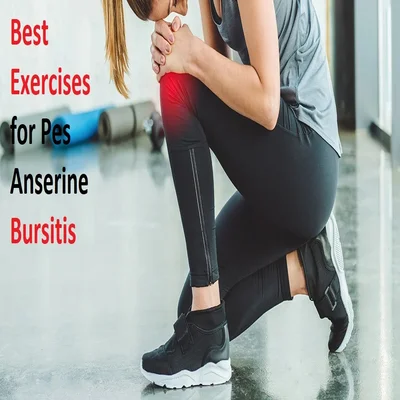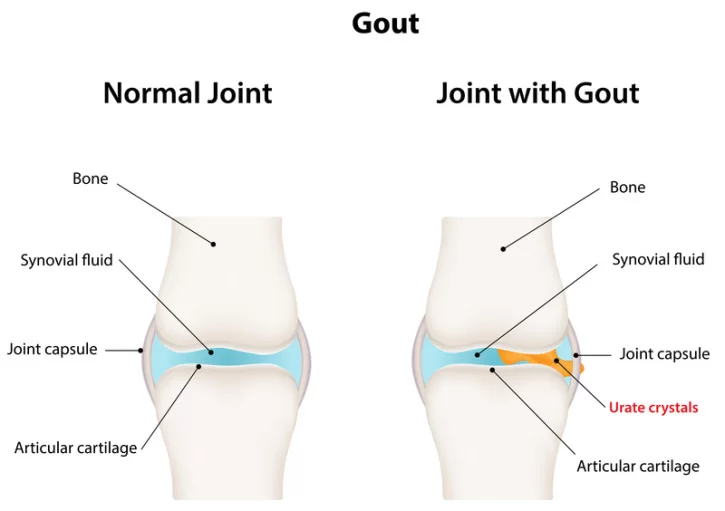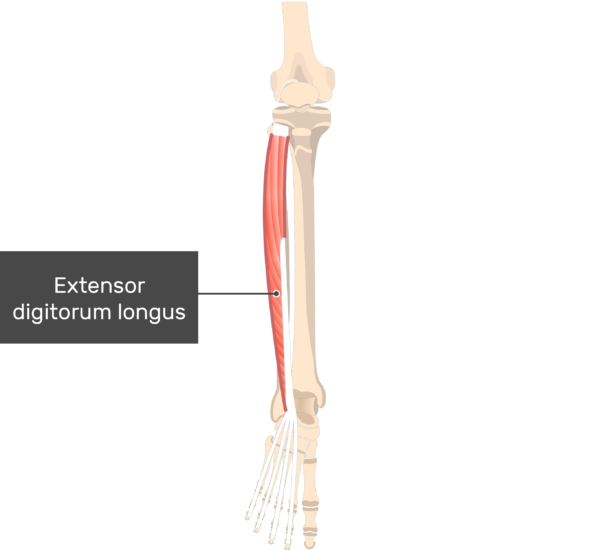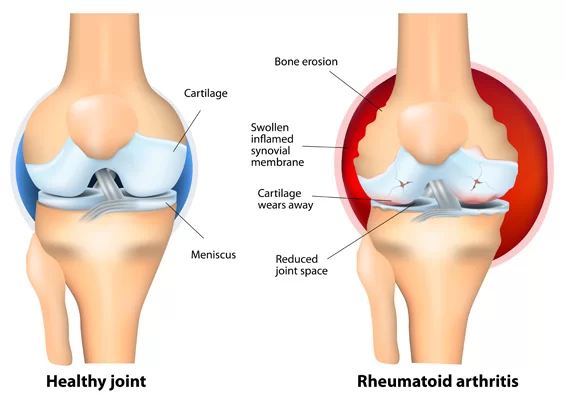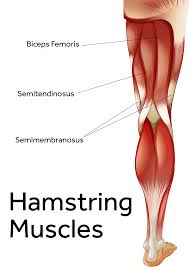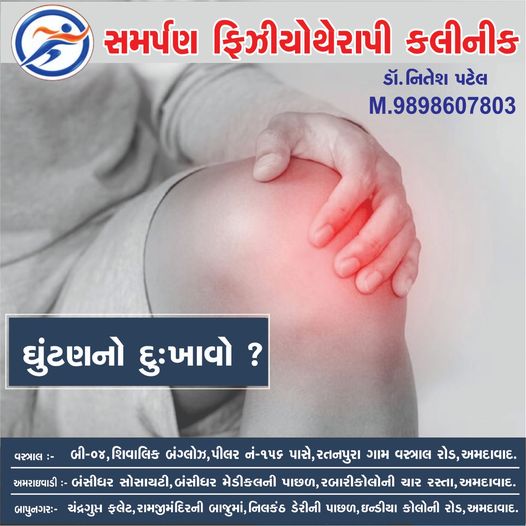23 Best Exercise for Pes Anserine Bursitis
Table of Contents
Introduction
Exercise for Pes Anserine Bursitis is a great option along with Pain medication and Physical therapy treatment with rest.
The pes anserine bursitis also known as the intertendinous bursa, this condition is described as the inflammation of the bursa of the insertion of included muscles sartorius,gracillis, and semitendonous. these muscles are situated in the proximal medial aspect of the knee, two inches below the medial knee joint line between the pes anserine tendon. pes anserine bursitis also occurs when the sartorius muscle and semitendinosus muscles are used by doing repeated movements such as flexion and adduction. This causes an increase in the pressure on the bursa. The bursa becomes inflamed and becomes very painful, tendered, and osteoarthritis of the knee joint.
Exercise or physiotherapy is a very great treatment for this bursitis. The main purpose of this treatment is to control the pain, reduce the inflammation avoid aggravated activity. The most important thing is taking rest for a week during pain. And avoid stair climbing or other activity which aggravates the condition. During the inflammatory phase, you can apply a piece of ice which reduces the inflammation. and ice massage of five to ten minutes every 4-7 hours will reduce inflammation. there may be included leg stretching exercises such as standing calf stretching, standing calf stretch, standing quadriceps stretch, heel slide, hip adductor stretch, quadriceps isometric, and hamstring isometric.
Progression of these exercises may be including closed kinetic chain exercises such as single-knee-dips, squats, and leg presses. During the progression stage, you can add the strengthening exercise you can use the resistant band and the weight cuff. the strengthening exercise increase or maintained the strength of the hip and knee muscles. Mostly the pes anserine bursitis can heal in around six to eight weeks. it can take more duration in severe cases. if you can take proper treatment do proper exercise and take rest during the acute phase it will heal.
Causes of Pes Anserine Bursitis
Doing sports activities that require repetitive knee movements, such as soccer or tennis.
Tight hamstrings
abnormal knee aligmnet(valgus)
Obesity (overweight)
Overuse of knee joint
Improper training techniques, such as not doing stretch of muscles before an exercise or workout
osteoarthritis of the knee, type 2diabetes, Osgood Schlatters
Direct injury
constant friction or pressure on the bursa
athlete (runners), excessive hill running
More common in women due to a broad pelvis and the angle of the knee joint
Flat feet
Symptoms of Pes Anserine Bursitis
tenderness is seen after to the touch the area of bursitis
pain increasing on the inside of the knee or in the center of the shin bone, two to three inches below the knee joint
Decerres muscle strength
Gait deviations
Decerese the functions
Decreased the range of movement
Postural dysfunction/Impaired lower extremity biochemical
Aggravating factors in the condition
Activity that required movements such as flexion, extension, and medial and lateral rotation of the knee joint.
Pivoting, Kicking, and squatting quick movements from side to side, during sports are irritable movements.
Best Exercise for Pes Anserine Bursitis
Calf stretch with or without a wall

For the calf muscle stretches you can do it actively or passively. There are many methods to get calf muscle stretching. The first method requires a wall, the other does not. Along with the wall
Step 1: Stand about arm’s length in front of a wall. Place your right foot forward compared to your left leg. Extend both arms against the wall. Step 2: Press your back (left) heel into the floor and extend your back leg while keeping your front leg bent. Stay in this position for 15-20 seconds. Step 3: Repeat the stretch on the other side f the muscles. Without a wall
Step 1: Place your right foot forward compared to your left foot. Step 2: Shift your weight onto your front (right) foot keeping the weight of your heel on the floor. Stay in this position for 15-20 seconds. Step 3: Repeat the stretch on the other side of the leg.
Heel slide
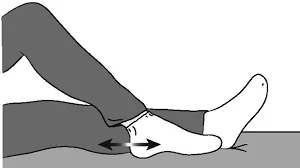
For the heel, slide exercises start with the supine lying position on the plinth or mat.
Then do the heel drag toward your buttocks with knee flexion and hip flexion. Try to touch the buttocks with heels. Touch till the comfortable position. Hold it for five or ten seconds. Now gradually straighten your leg. Then return to your neutral position slowly. Then relax. Repeat on the other side. Repeat 5-10 times on each side.
Quadriceps sets
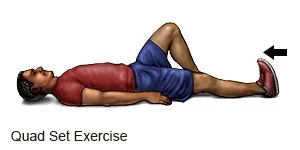
The quadriceps sets start with a supine lying position on the plinth or mat on your back with your legs straight on the bed or table. After that, you can put a rolled towel underneath your knee on the leg to be exercised. Your heel should rest on the ground. Then you should tighten the anterior part of the thigh muscle and press the back of your knee into the napkin or towel. Hold it for five or ten seconds. Then return to your neutral position slowly. Then relax. Repeat on the other side.
Repeat 5-10 times on each side and do three sets per day.
Quadriceps stretching exercises
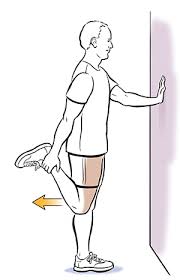
To perform a fourth stretch, stand on one leg and grab the back of a chair for balance. With your free hand, hold the extension position of the joint. Next, gradually pull your heel toward your back until or unless you experience a strong stretch in the front of your thigh muscle or quadriceps muscles.
Hold this quadriceps stretching for 30-60 seconds which is the minimum hold and then repeat this stretch on other muscles. performed this exercise three times on each leg before and after training any muscle group. Remember to keep your knees close together. You should also, maintain a neutral hip and knee position when doing the quadriceps stretch.
Performed this exercise about 3-4 repetitions with proper hold do 3 sets per day.
Hip flexors stretch exercise
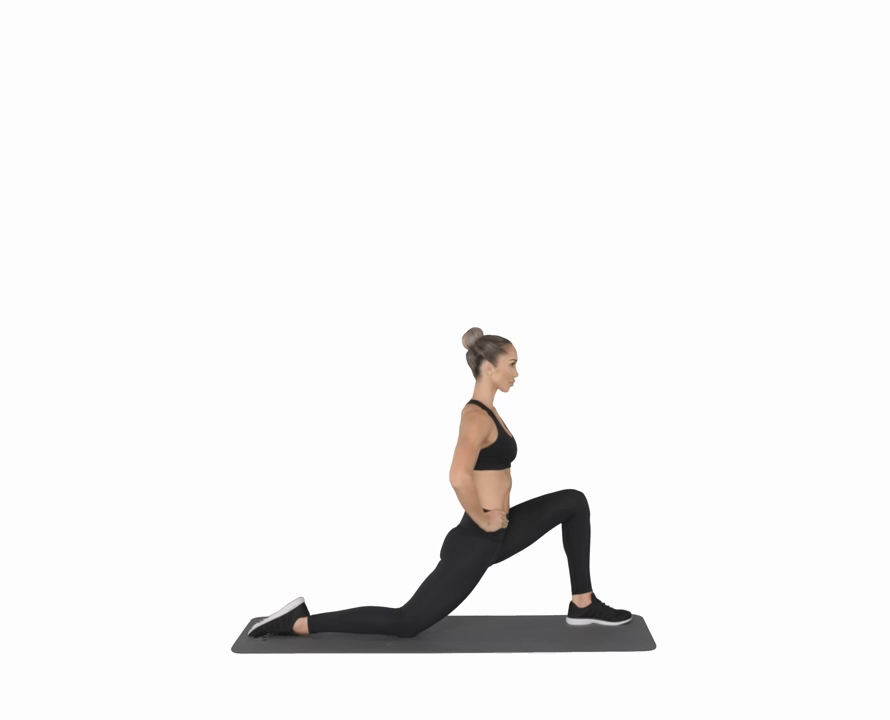
Start the hip flexor muscles stretch by taking a kneeling position(on your right knee). Then flexion your left hip forward at a 90-degree angle. Place your hand on your left knee or hold the left knee and make sure your back should be straight. Hold this position for around 30-60 seconds which is the minimum hold duration and repeat the movement on the other side.
Choose and perform these exercises according to your comfort zone, taking care of your body while exercising not putting overstress on your muscles. these exercises provide the quadriceps flexors muscle stretch
Performed this stretch three or four times per session and performed 3 sets per day.
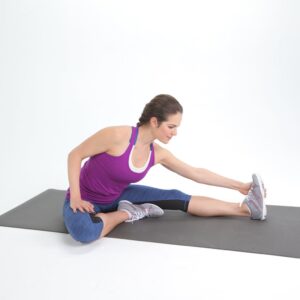
Hamstring Stretching
The hamstring stretch exercise you can perform actively or passively. start with passively then jump on the active method. start with one leg or hip slight flexion, with a straight or extension knee, and put your foot flat on the surface. slightly flexed forwards from your hips with a straight back and take care of keeping your chest up.
You should experience this stretch at the posterior part of your thigh. repeat this stretch three-time per session and performed three sets per day. and in between the exercises, there is a hold required the hold should be or the duration of the hold is 30 or 60 seconds.
Hip Abduction with Band
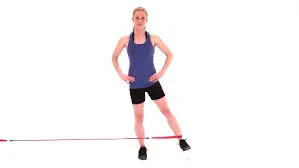
The hip abduction with the band is the strengthening exercise of the hip muscles. start with this exercise in a side Lying position on the plinth or mat now wrap the resistance band around your ankles. you should put your hand on the pelvis for stabilization and then perform the movement of the hip. Raise your hip or (do abduction of the hip) up and your hip muscles experience resistance while the hip abduction movement. Hold this position for three or five seconds then lower your leg and repeat. performed these strengthening exercises ten to fifteen times and then gradually increase the repetition. performed the three sets per day.
The hip abductor with band exercises provides strength to the gluteus medius, gluteus minimus, and Sartorius muscles.
Bridge with Abduction Band
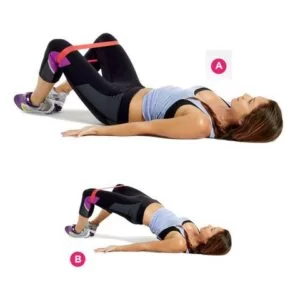
This exercise you can add in modification of the bridging exercise. start with the supine lying position on the plinth or mat. You also required a resistance band that provides strength to your muscles. Slight hip flexion and knee flexion and wrap the resistance band around your thigh.
Then make a bridge or lift your whole body and then Push gently against the resistance band while you tilt your pelvis backward to flatten your back against the surface then raise your pelvis high off the surface. Hold the position for around two-three seconds then back to the starting position. You can Repeat 5-10 times on each side and gradually increase the repetition and perform the three sets per day. You can increase the repetition while the progression duration
Straight leg raise
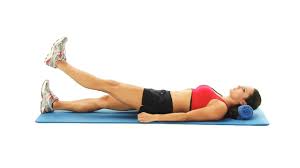
For the straight leg raise exercise you can start with the supine lying position on the plinth or mat. Now flexion of your one and other hip keep in a neutral position.
Then gradually lift your one hip off the plinth(performed hip flexion position at the level of another knee). While keeping your other knee straight. Hold the hip flexion position for 5-10 seconds.
Lower your hip and return to your original position gradually.
Then take a rest for a few seconds. Repeat on the other side.
you can Repeat 5-10 times on each side and gradually increase the repetition and perform the three sets per day.
Prone knee bending
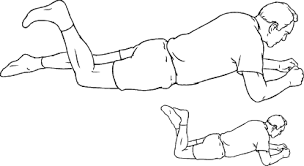
For the prone knee bending exercises start with the prone lying position on the plinth or mat.
Now gradually flexion your knee with pain-free range and a comfortable position. Hold the knee flexion for five to ten seconds if you are not able the hold the position you should avoid it.
Then lower your knee and return to your neutral position gradually. After one repetition you feel tired you can take rest for five seconds during this procedure, and your bursa is surgically removed. You can Repeat 5-10 times on each side and gradually increase the repetition and perform the three sets per day.
Prone knee extension
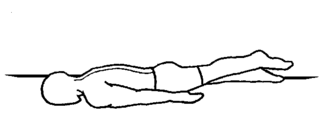
For the prone knee extension exercises start with the prone lying position on the plinth or mat.
Now gradually lift your entire hip(hip flexion position) off to the plinth or mat. While trying to keep your knee straight during the whole exercise. Hold the hip flexion position for five to ten seconds. then lower your hip(back to the normal position).
Then return to your neutral position gradually. If you feel uncomfy so you can take rest after every exercise for a few seconds. You can Repeat 5-10 times on each side and gradually increase the repetition and perform the three sets per day.
Hamstring curls

For the hamstring curl exercise, you required a chair for support. Start the exercise with a standing position. now take support from a chair(for balance during exercise). and then performed the knee flexion or knee bend. Then flexion of your affected knee and raise your heel toward the ceiling till the comfortable position. Hold this knee flexion position for five to ten seconds. Then return to your neutral position. If you feel uncomfy so you can take rest after every exercise for a few seconds. You can Repeat 5-10 times on each side and gradually increase the repetition and perform the three sets per day.
Isometric Hamstrings exercise
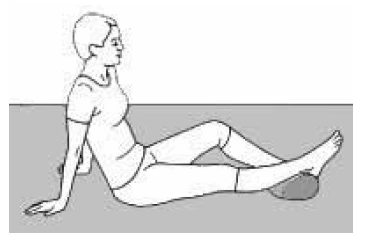
For the isometric hamstring, exercises start with a supine lying position on the plinth or mat.
Now slightly flexion of your knee and press or dig the heel on the surface of the plinth.
They contract up your posterior thigh muscles. Hold the press position for five to ten seconds. Then return to your neutral position gradually(hip flexion). Then return to your neutral position. If you feel uncomfy so you can take rest after every exercise for a few seconds. You can Repeat five to ten times on each side and gradually increase the repetition and perform the three sets per day. You can also put the folded napkin under your heel and press it in between the exercises.
Knee extensions
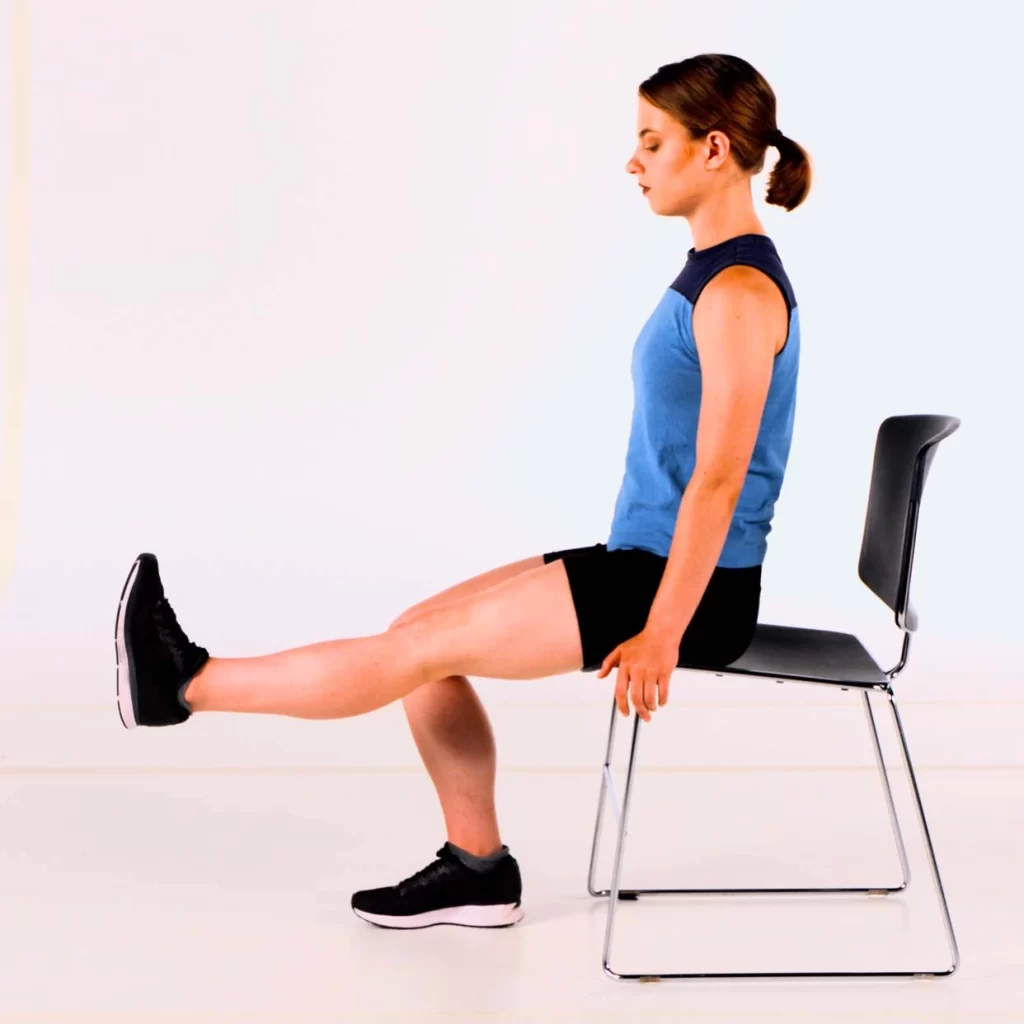
The knee extension is the mobility exercise for the knee joint it will increase the mobility of the knee. you can start the exercise with a seating position on a chair or bench.
while Sitting your back should be straight. Now tighten your thigh muscles.
Then gradually straighten and raise your affected leg as high as possible till the comfortable position. Then you can tighten your thigh muscles and hold this position for a few seconds.
Lower your knee to the starting position. Then return to your neutral position slowly. If you feel uncomfy so you can take rest after every exercise for a few seconds. You can Repeat 5-10 times on each side and gradually increase the repetition and perform the three sets per day.
Wall squats

The wall squats exercise is a difficult exercise so you can add while progression duration. Start the exercise with the standing position your back should be in touch with the wall which is necessary. Now gradually flexion your knees and slide your back down with the wall until or unless your knees experience a comfortable position. you should Make sure to keep your back straightened and shoulders against the wall.
Hold the squat position for five to ten seconds if you feel comfortable. Slowly return to the standing position.
Then return to your neutral position gradually.
Then relax and take a rest with a deep breath for 1-2 seconds. You can Repeat 5-10 times on each side and gradually increase the repetition and perform the three sets per day. You can increase the repetition while progression duration.
Lunges
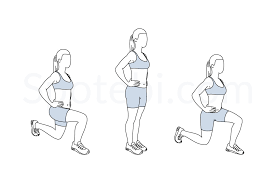
The lunges exercise Starts with a standing position. the lungs are difficult to exercise so you can add in progression duration.
Now flexion of your knees to approximately 90 degrees and lower yourself toward the ground. Remember to keep your core straightened. Then gradually lift up your front leg and return to the standing position.
Then return to your neutral position slowly. Then relax your body and take a rest. You can Repeat 5-10 times on each side and gradually increase the repetition and perform the three sets per day. You can increase the repetition while progression duration.
Adductor Squeeze with Straight Legs
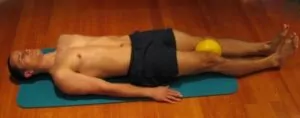
For the adductor squeeze exercise, you required a ball or napkin. start with the supine Lying positioning the plinth or mat and placing a ball in between your ankles. your ball should be properly stabilized while the exercise. For this exercise, you provide strength to these muscles including the adductor longus, adductor brevis, and adductor Magnus. now you can press the ball or perform hip adduction movement. which contract
the hip adductor muscles. Hold this pressure for three to five seconds then release and repeat.
You can Repeat 5-10 times on each side and gradually increase the repetition and perform the three sets per day. You can increase the repetition while progression duration.
Relaxation of hamstring
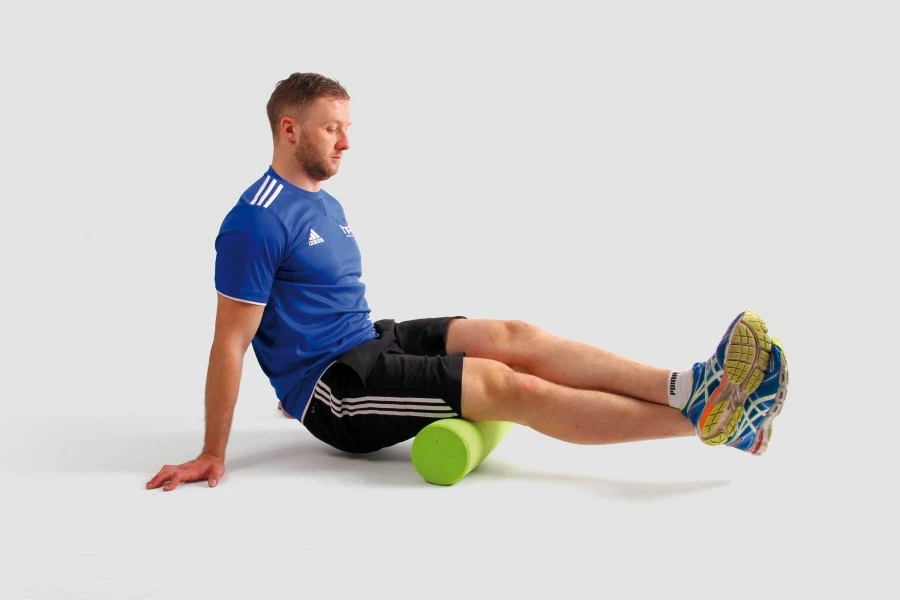
For the relaxation of hamstring muscles, you should sit on the floor or mat with your hips extended in front of you. Place the foam roller under your hamstrings on the right side of your hip. Lift your buttocks to shift the weight to your thigh. Use your upper extremity to help you move back and forth, rolling the foam from the origin to the insertion to your hamstrings. Make sure you roll very gradually. You can Repeat 5-10 times on each side and gradually increase the repetition and perform the three sets per day. You can increase the repetition while progression duration.
Relaxation quadriceps
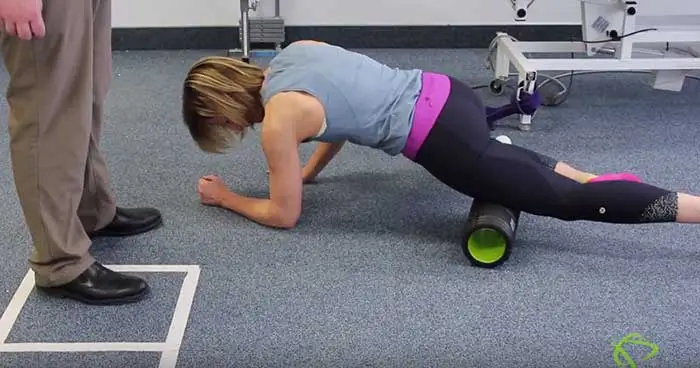
For the relaxation of quadriceps muscles, you should take a prone on-hand position both hips should be extended. Stretch out the leg that has pain. Place the foam roller under your quadriceps muscles. Now roll it along the origin to the insertion thigh muscles. Make sure you roll very gradually. You can Repeat 5-10 times on each side and gradually increase the repetition and perform the three sets per day. You can increase the repetition while progression duration.
Foam rolling directly pes anserine
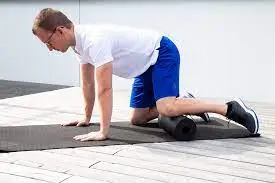
For this exercise you required foam roller equipment for direct rolling on the pes anserine, you should take the quadrated position. you should raise the affected knee. you should put the foam roller under the knee main focusing on the inner side of the knee. Roll back and forth very gradually. You can Repeat 5-10 times on each side and gradually increase the repetition and perform the three sets per day. You can increase the repetition while progression duration.
Cobbler’s pose

This exercise is also called the butterfly exercise. for this exercise, you should take a long sitting position on the mat then slight abduction of the hip joint and a slight flexion of the knee joint, and put your sole feet together. For an effective stretch, push your knees down toward the surface with your elbows. You should experience the stretch in your inner thighs of muscles. Be careful not to arch your back. Hold this stretch or position for 60 to 90 seconds this hold is necessary for this stretch.
Hamstring strengthening with the exercise band
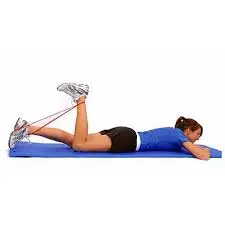
For the hamstring strengthening exercise, you required a resistance band the purpose of this exercise is it is to provide strength to your hamstring muscles. Start with standing position one leg in front of the other with the exercise band around the ankle of the front leg. Stand on the opposite leg and support yourself by keeping your hands on a chair if necessary. through the leg, you should perform knee movement knee flexion, and extension. Performed this stretch three or four times per session and performed 3 sets per day.
Romanian Deadlift
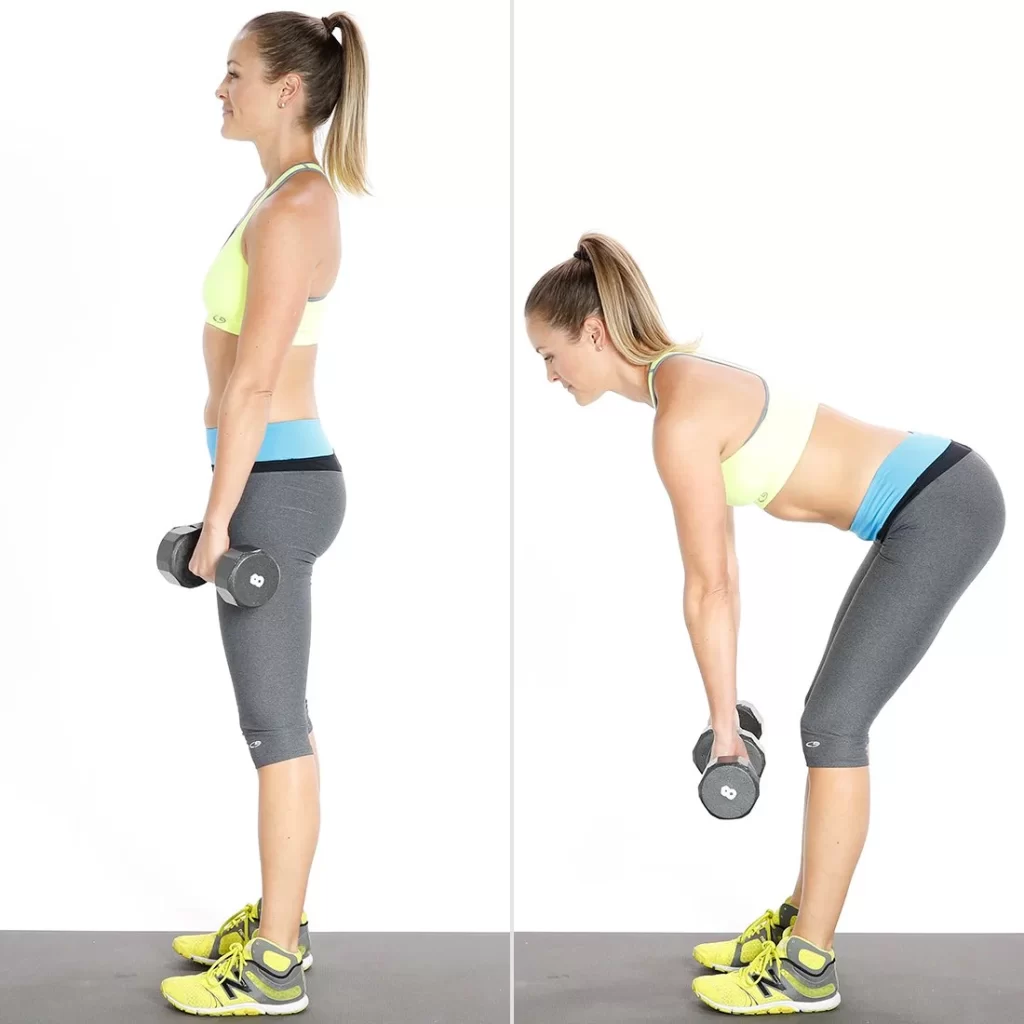
This is a difficult exercise so you can add on the progression duration of the treatment. start with the standing position with your feet hip is a slight bend in your knees, and holding a weight(according to your strength) in your hands. do flexion from your hips and also keep a straight back and your chest lifted. Bend until you experience tightness in your hamstrings at the posterior part of your thighs, hold this position for around two to three seconds then return to standing by squeezing your glute muscles, relaxed then repeat.
do three to five repetitions per session which is enough.
How can you treat pes anserine bursitis?
There are several ways to reduce discomfort and begin recovery. Treatment for pes anserine bursitis includes:
Medicines. Nonsteroidal anti-inflammatory drugs (NSAIDs) can help reduce pain and swelling.
Take a rest. Stop activities that make bursitis worse. Ask your doctor when you can return to your normal routine.
Cold packs. Applying ice to the affected area three or four times a day can help reduce inflammation.
Wedge soles. If anterior knee pain is caused by abnormal knee alignment, wedge insoles can help position the feet in a more favorable position. Kinesiology tape. You can use kinesiology tape to relieve pain symptoms in the front of the knee. Be sure to talk to your doctor about proper techniques.
Physiotherapy. Your doctor may recommend ultrasound therapy or stretching exercises to help you regain strength and range of motion. Bursal injections. Your provider may inject steroid medications into the bursa to relieve your symptoms.
Surgery. Although rare, severe cases may require surgery. Your bursa is surgically removed. People who undergo this procedure can usually return to normal activities in about three to four weeks.
A Note from the Samarpan Physiotherapy Clinic
Physiotherapy is a great treatment for this condition physiotherapy managed the pain caused by this condition or bursitis and starts the treatment with rest. rest is most important for this bursitis. it provides the prevention of the condition. you should avoid stair climbing or aggravating activities such as squatting and kicking and also such activities which aggravated the pain of the bursa NASID(non-steroidal anti-inflammatory drugs) can minimize or decrease the pain.
stop the knee movements and apply cryotherapy(ice) while the inflammatory phase. apply ice massage should be 15 to 20 minutes every 4-7 hours it will decrease the swelling and inflammation. teach the patient exercise for these conditions. major exercise will be for this condition including leg stretching exercises,(hamstring stretching, calf stretching, standing quadriceps stretching, hip adductor stretch, heel slide, quadriceps isometrics, hamstrings isometrics) while progression period or duration you can start or involve closed kinetic chain exercises such as single-knee-dips-, squats and leg pressure, resisted leg pull you can use a resistance band to strengthen it.
For the treatment of pes anserine bursitis, you can visit our Samrpan physiotherapy clinic. our clinic provides you with mechanical therapy during the start of the treatment and then adds all exercises that provide you muscle flexibility and reduce the pain of bursitis. we will teach you home exercises for this condition and ergonomic advice for this condition.
Prevention or tips for this condition
For pes, anserine bursitis prevention includes:
Athletes participate in care or learn the correct knee position during athlete activity
follow or do regular stretching and strengthen exercises programmed for the lower extremities, especially for the hamstring and the quadriceps muscles
which maintains the great physical conditioning
practice balance exercise and agility exercise
wear proper or well-fitted shoes for running and for daily activity
if you have diabetes so manage and treat the diabetes
maintained the normal weight
always do warm up and the stretching exercise before starting any physical activity or any sports activity
avoid aggravated movement or activity. avoid painful movement during the acute duration
When you not to do exercise
When you are feeling not well or you feel sick
Fever
Headache
If exercise becomes painful you can stop the exercise
Severe muscle burning
these activities you should avoid while pes anserine bursitis
Avoid stair climbing
Avoid high-impact activity (running and jumping)
Playing sports
long walking steps
Avoid excessive squatting
FAQs
If you are prone to developing knee bursitis, it is great to avoid all high-impact activities and exercise This exercise includes such as running, jumping, and playing sports. If you do these types of high activities, make sure to take breaks or rest often and stretch well before and after the activity, these stretchings provide flexibility to your muscles. sometimes high-impact activity increases the pain and develops the swelling around the knee joint.
the risk factors include osteoarthritis of the knee joint, obesity, flat feet, and the female gender risk factors for developing this syndrome. you can treat the pes anserine condition with steroid injections and also treat with physiotherapy(mechanical therapy manual therapy and exercise.)and you can take care avoiding activity that aggravates the factors or condition.
Pes anserine bursitis described it is the specifically as the inflammatory condition of the bursal sac located between the muscular tendons and the muscles which are involved such as Sartorius and semitendinosus and their insertion at the proximal medial tibia. These three muscles work to help in the “cross-legged ”sitting or position.
Normal back to the high impact activity such as running Recovery duration from Pes Anserine Bursitis. Take it easy on your knee. After a few days of rest, your symptoms should feel much better. Symptoms usually resolve completely between six to eight weeks.so you can treat the condition within six to eight weeks which is the minimum duration for this condition.
For the treatment you can go for physiotherapy(which included manual therapy and mechanical therapy with all knee exercises)also physiotherapy recommended the home-exercise program to strengthen and stretch the muscles around your knees, hip, and abdomen to help prevent the onset of this condition physiotherapy focused on the knee around muscles and hip muscle strengthening and all over lower extremity muscles. the exercise provides then pain relief and increases the mobility of the hip and knee joints. and increase the strength of the muscles.

